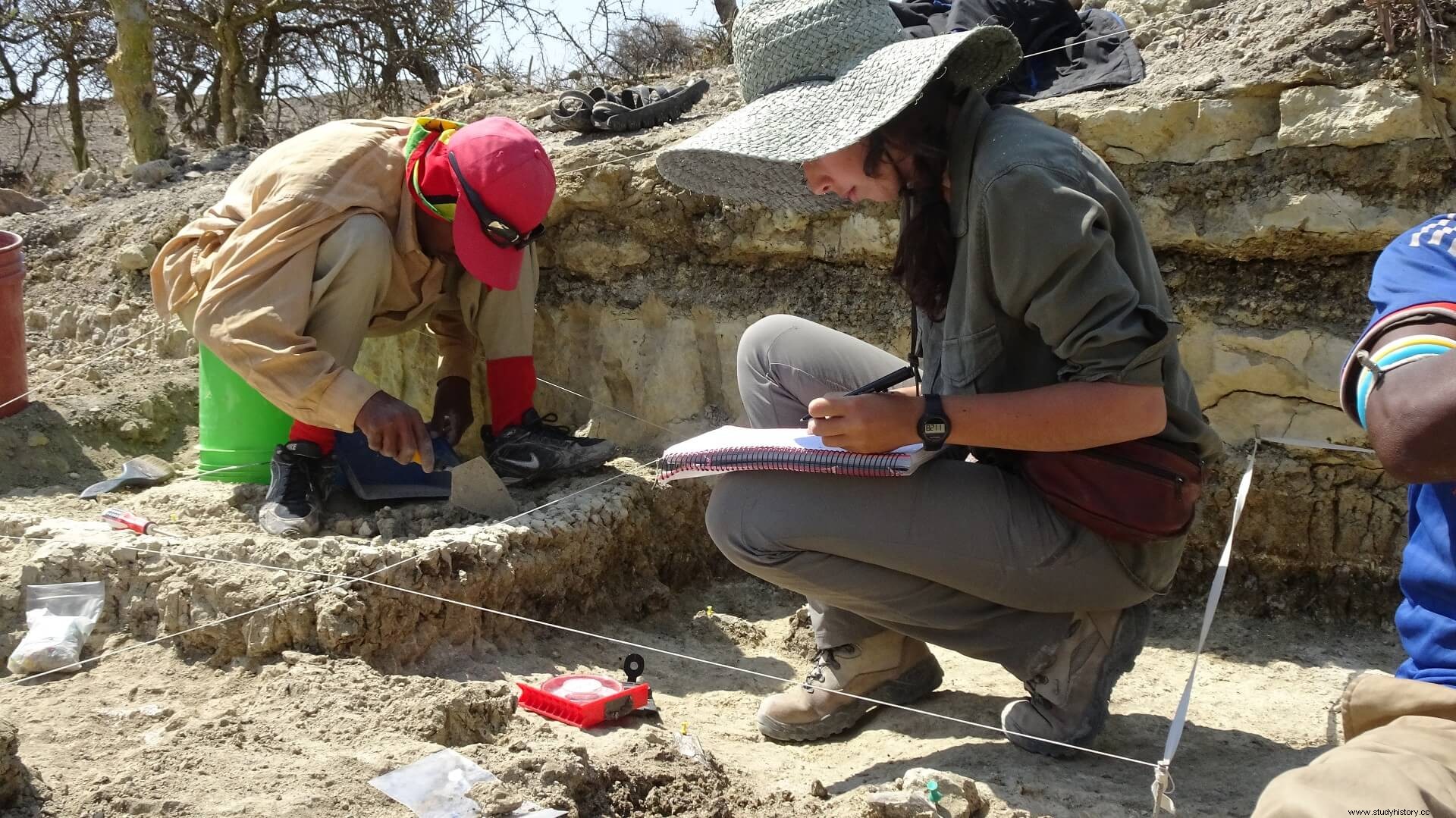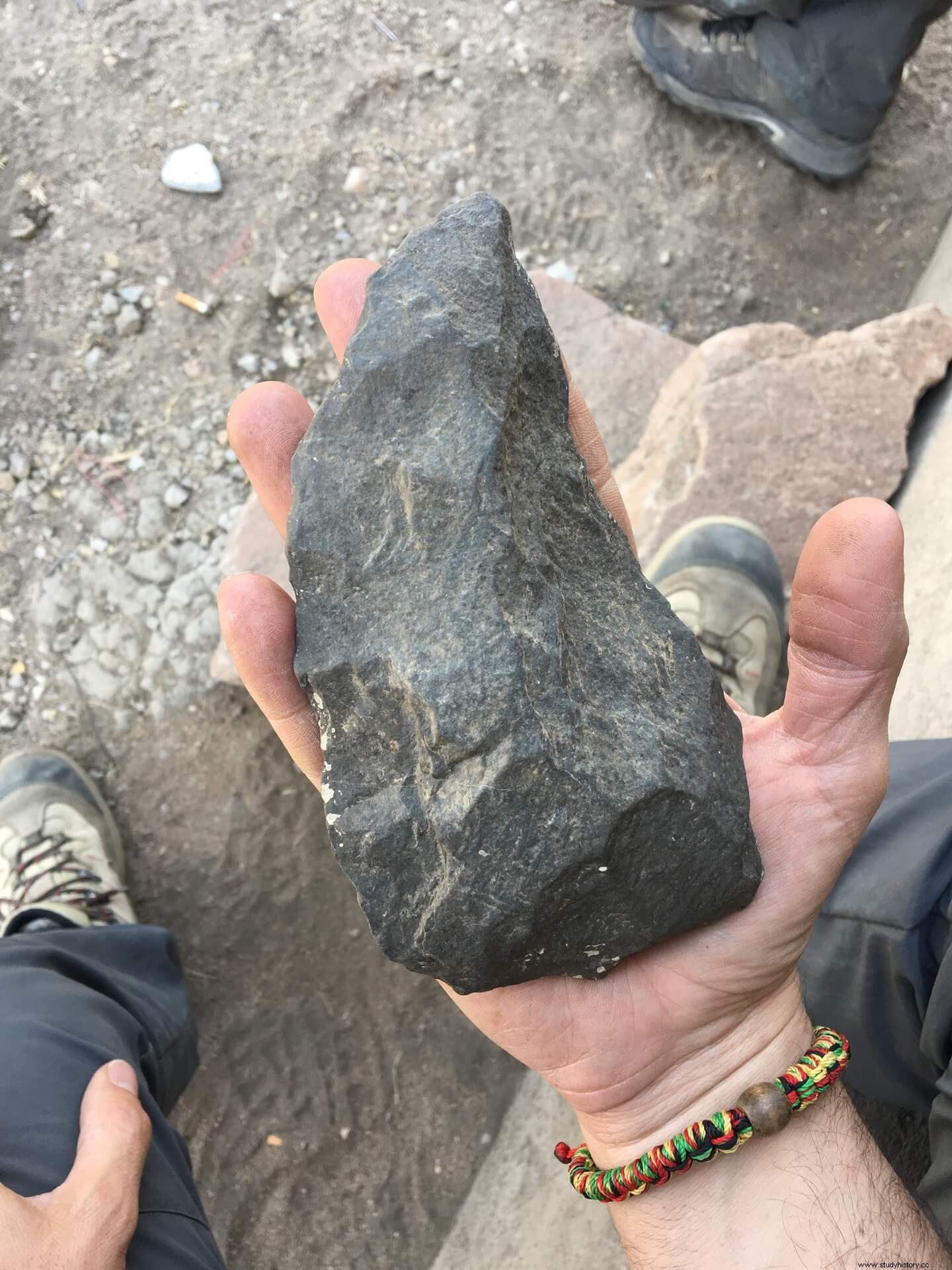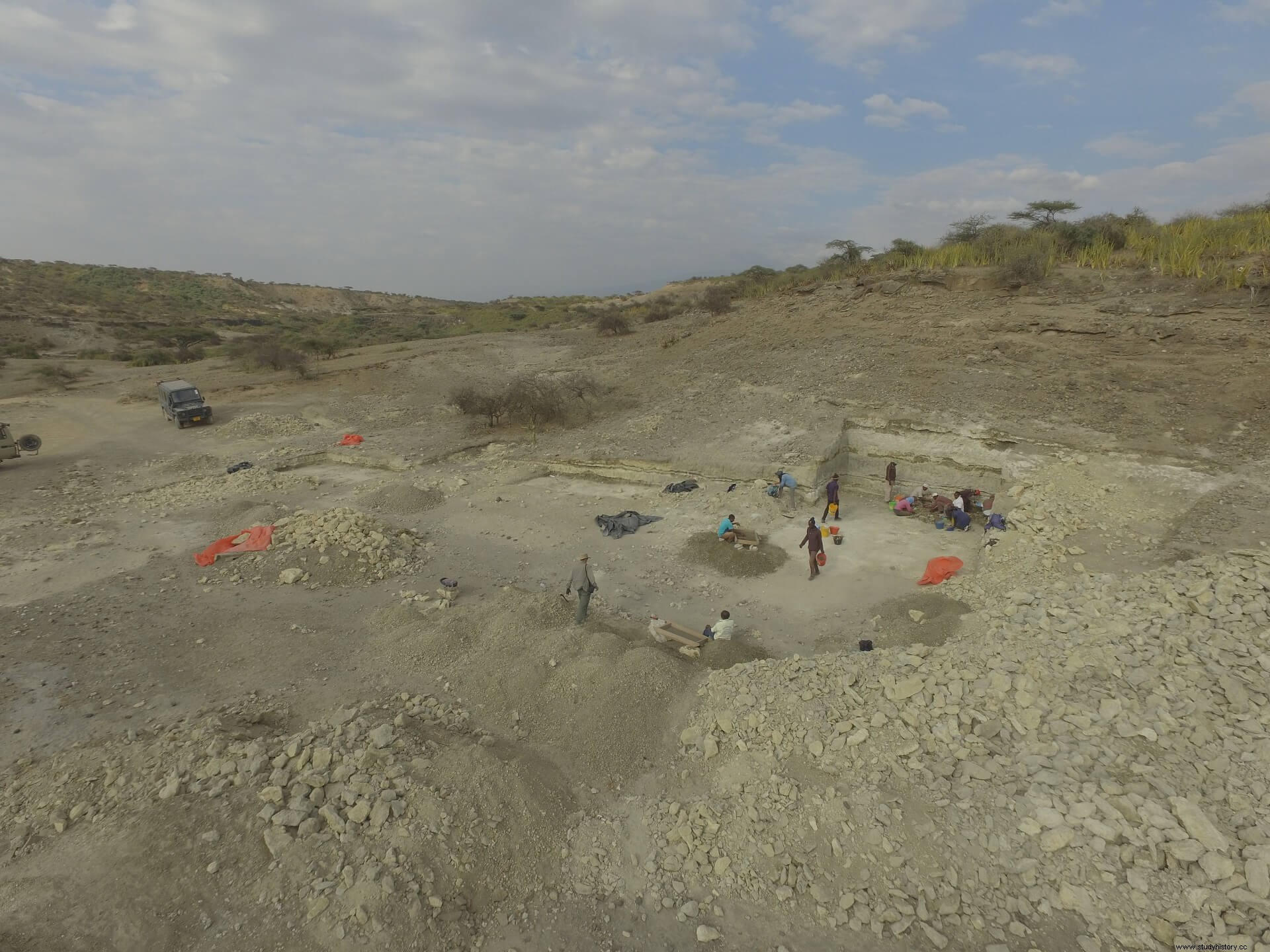
In 2006 a Spanish-Tanzanian team under the co-direction of M. Domínguez-Rodrigo, A. Mabulla and E. Baquedano accessed the lower beds of Olduvai (www.olduvaiproject.org). Our team went back to the oldest layers of the gorge to unravel the origin of human behavior. The fundamental questions we ask ourselves focus on the origin of solidarity behavior, the functional origin of the first stone industries, the origin of intentional food sharing and the dependence on meat in the diet and we have linked all this with the appearance of the first representatives of the genusHomo to which we belong.
Among our discoveries of human remains, we highlight more than ten hominids that have contributed the following novelties :
- Discovery of the oldest remains of Homo cf. erectus and proof that he lived with Homo habilis and Paranthropus boisei (Dominguez-Rodrigo et al., 2015).
- First remains of an associated skeleton of Paranthropus boisei . Until then, it was unknown what these creatures looked like from the neck down. The relevance of the discovery showed that as late as a little over a million years ago, these creatures still maintained arboreal habits (Domínguez-Rodrigo et al., 2013).
- Discovery of the first case of porotic hyperostosis in a child , which demonstrates the existence of a physiology accustomed to the regular consumption of meat 1.5 million years ago (Domínguez-Rodrigo et al., 2012).

In addition, we have discovered a number of new deposits in the oldest part of the gorge, which are the first significant deposits (i.e., high density of remains) discovered in Olduvai in more than half a century . Determining what they represent in terms of behavior is fundamental to understanding the origin of human behavior. For these purposes, our multidisciplinary project has developed an approach aimed at reconstructing the landscape with a level of detail never achieved before. Said reconstruction is based on a geomorphological reconstruction of the paleotopography of the landscape on which primitive human beings lived and a paleobotanical reconstruction of the existing vegetation in it. For this last type of study, the combination of palynological, phytolith and biomarker studies is being used. The tools (and some of the equipment) are the same ones that have been used to discern traces of life on the surface of Mars. With this detailed reconstruction of the landscape we will be able to understand why the hominids chose some areas and not others to carry out their activities and leave evidence of these in the form of archaeological sites. The use of artificial intelligence tools is helping us to reconstruct the process and select areas on that paleolandscape that has led to the discovery of new archaeological sites.

The discovery of these deposits has allowed get closer to the use of space that our ancestors made and be able to open a window to their socio-reproductive world. For the first time, a pattern of organization of materials has been identified within each site that is common and that tells us about a fascinating social world of the first members of the genus Homo . Novel spatial statistical tools applied for the first time in archeology are helping us understand these spatial associations like never before.
As another fundamental objective of our research, we study how this primary human behavior evolved over more than a million years in more complex forms collected in the archeology of the Acheulean sites . Our team has discovered one of the oldest testimonies of this important moment in the technological evolution of our ancestors that appears around 1.7 million years ago. This moment is fundamental in human evolution because it testifies to coexistence of human groups in large groups and with a diversity of behaviors depending on the habitat in which they were found. In these Acheulean sites we have a unique opportunity to get closer to the minds of those humans through the intention of capturing certain forms in their tools. Likewise, we have an opportunity to learn about their subsistence strategies, at this time that includes regular exploitation not only of small and medium-sized fauna, but also of megafuana weighing more than a ton.

The combination of novel techniques (with pioneering application of artificial intelligence) in a synchronous vision (in the reconstruction of paleolandscapes and the human behavior contained in them) and diachronic (the evolution of behavior over time), make this project something unique in the field of human evolution.
